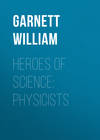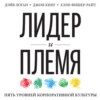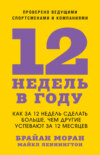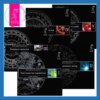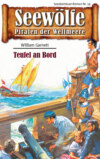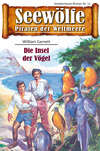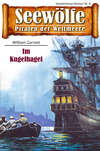Читать книгу: «Heroes of Science: Physicists», страница 12
"The modulus of the elasticity of any substance is a column of the same substance capable of producing a pressure on its base which is to the weight causing a certain degree of compression as the length of the substance is to the diminution of its length."
It is not usual now to express Young's modulus of elasticity in terms of a length of the substance considered. As now usually defined, Young's modulus of elasticity is the force which would stretch a rod or string to double its natural length if Hooke's law were true for so great an extension.
So much of Dr. Young's scientific work has been mentioned here because it was during his early years of professional practice that his most original scientific work was accomplished. As already stated, after two years' tenure of the Natural Philosophy chair at the Royal Institution, Young resigned it because his friends were of opinion that its tenure militated against his prospects as a physician. In the summer of 1802 he escorted the great-nephews of the Duke of Richmond to Rouen, and took the opportunity of visiting Paris. In March, 1803, he took his degree of M.B. at Cambridge, and on June 14, 1804, he married Eliza, second daughter of J. P. Maxwell, Esq., whose country seat was near Farnborough. For sixteen years after his marriage, Young resided at Worthing during the summer, where he made a very respectable practice, returning to London in October or November. In January, 1811, he was elected one of the physicians of St. George's Hospital, which appointment he retained for the rest of his life. In this capacity his practice was considerably in advance of the times, for he regarded medicine as a science rather than an empirical art, and his careful methods of induction demanded an amount of attention which medical students, who preferred the more rough-and-ready methods then in vogue, were slow to give. The apothecary of the hospital stated that more of Dr. Young's patients went away cured than of those who were subjected to the more fashionable treatment; but his private practice, notwithstanding the sacrifices he had made, never became very valuable.
In 1816 Young was appointed Secretary to a Commission for determining the length of the second's pendulum. The reports of this Commission were drawn up by him, though the experimental work was carried out by Captain Kater. The result of the work was embodied in an Act of Parliament, introduced by Sir George Clerk, in 1824, which provided that if the standard yard should be lost it should "be restored to the same length," by making it bear to the length of the second's pendulum at sea-level in London, the ratio of 36 to 39·1393; but before the standards were destroyed, in 1835, so many sources of possible error were discovered in the reduction of pendulum observations, that the Commission appointed to restore the standards recommended that a material standard yard should be constructed, together with a number of copies, so that, in the event of the standard being again destroyed, it might be restored by comparison with its copies. In 1818 Young was appointed Superintendent of the Nautical Almanac and Secretary of the Board of Longitude. When this Board was dissolved in 1828, its functions were assumed by the Admiralty, and Young, Faraday, and Colonel Sabine were appointed a Scientific Committee of Reference to advise the Admiralty in all matters in which their assistance might be required. The income from these Government appointments rendered Young more independent of his practice, and he became less careful to publish his scientific papers anonymously. In 1820 he left Worthing and gave up his practice there. The following year, in company with Mrs. Young, he took a tour through France, Switzerland, and Italy, and at Paris attended a meeting of the Institute, where he met Arago, who had called on him in Worthing, in 1816. At the same time he made the acquaintance of Laplace, Cuvier, Humboldt, and others. In 1824 he visited Spa, and took a tour through Holland. In the same year Young was appointed Inspector of Calculations and Medical Referee to the Palladium Insurance Company. This caused him to turn his attention to the subject of life assurance and bills of mortality. In 1825, as Foreign Secretary of the Royal Society, he had the satisfaction of forwarding to Fresnel the Rumford Medal in acknowledgment of his researches on polarized light. Fresnel died, in his fortieth year, a few days after receiving the medal.
Dr. Young died on May 10, 1829, in the fifty-sixth year of his age, his excessive mental exertions in early life having apparently led to a premature old age. He was buried in the parish church of Farnborough, and a medallion by Sir Francis Chantrey was erected to his memory in Westminster Abbey.
But, though Young was essentially a scientific man, his accomplishments were all but universal, and any memoir of him would be very incomplete without some sketch of his researches in Egyptian hieroglyphics. His classical training, his extensive knowledge of European and Eastern languages, and his neat handwriting and drawing, have already been referred to. To these attainments must be added his scientific method and power of careful and systematic observation, and it will be seen that few persons could come to the task of deciphering an unknown language with a better chance of success than Dr. Young.
The Rosetta Stone was found by the French while excavating at Fort St. Pierre, near Rosetta, in 1799, and was brought to England in 1802. The stone bore an inscription in three different kinds of character – the Hieroglyphic, the Enchorial or Demotic, and the ordinary Greek. Young's attention was first called to the Egyptian characters by a manuscript which was submitted to him in 1814. He then obtained copies of the inscriptions on the Rosetta Stone and subjected them to a careful analysis. The latter part of the Greek inscription was very much injured, but was restored by the conjectures of Porson and Heyne, and read as follows: – "What is here decreed shall be inscribed on a block of hard stone, in sacred, in enchorial, and in Greek characters, and placed in each temple, of the first, second, and third gods."
This indicated that the three inscriptions contained the same decree, but, unfortunately, the beginnings of the first and second inscriptions were lost, so that there were no very definitely fixed points to start upon. The words "Alexander" and "Alexandria," however, occurred in the Greek, and these words, being so much alike, might be recognized in each of the other inscriptions. The word "Ptolemy" appeared eleven times in the Greek inscription, and there was a word which, from its length and position, seemed to correspond to it, which, however, appeared fourteen times in the hieroglyphic inscription. This word, whenever it appeared in the hieroglyphics, was surrounded by a ring forming what Champollion called a cartouche, which was always employed to denote the names of royal persons. These words were identified by Baron Sylvestre de Sacy and the Swedish scholar Akerblad. Young appears to have started with the idea, then generally current, that hieroglyphic symbols were purely ideographic, each sign representing a word. His knowledge of Chinese, however, led him to modify this view. In that language native words are represented by single symbols, but, when it is necessary to write a foreign word, a group of word-symbols is employed, each of which then assumes a phonetic character of the same value as the initial letter of the word which it represents. The phonetic value of these signs is indicated in Chinese by a line at the side, or by enclosing them in a square. Young supposed that the ring surrounding the royal names in the hieroglyphic inscription had the same value as the phonetic mark in Chinese, and from the symbols in the name of Ptolemy he commenced to construct a hieroglyphic alphabet. He made an error, however, in supposing that some of the symbols might be syllabic instead of alphabetic. It is true that in the older inscriptions single signs have sometimes a syllabic value, and sometimes are used ideographically, while in other cases a single sign representing the whole word is employed in conjunction with the alphabetic signs, probably to distinguish the word from others spelt in the same way, but in inscriptions of so late a date as the Rosetta Stone, the symbols were purely alphabetic. Another important step made by Young was the discovery of the use of homophones, or different symbols to represent the same letter. Young's work was closely followed up by Champollion, and afterwards by Lepsius, Birsch, and others. The greater part of his researches he never published, though he made careful examinations of several funeral rolls and other documents.
It would occupy too much space to give an adequate account of Young's researches in this subject; some portion of his work he published in a popular form in the article "Egypt," in the supplement of the "Encyclopædia Britannica," to which supplement he contributed about seventy articles on widely different subjects. Perhaps it is not too much to say that to Young we owe the foundation of all we now know of hieroglyphics and the Egyptian history which has been learned from them; and the obelisk on the Thames Embankment should call to mind the memory of no one more prominently than that of Thomas Young.
MICHAEL FARADAY
The work of Michael Faraday introduced a new era in the history of physical science. Unencumbered by pre-existing theories, and untrammelled by the methods of the mathematician, he set forth on a line of his own, and, while engaged in the highest branches of experimental research, he sought to explain his results by reference to the most elementary mechanical principles only. Hence it was that those conclusions which had been obtained by mathematicians only by the help of advanced analytical methods, and which were expressed by them only in the language of the integral calculus, Faraday achieved without any such artificial aids to thought, and expressed in simple language, having reference to the mechanism which he conceived to be the means by which such results were brought about. For a long time Faraday's methods were regarded by mathematicians with something more than suspicion, and, while they could not but admire his experimental skill and were compelled to admit the accuracy of his conclusions, his mode of thought differed too widely from that to which they were accustomed to command their assent. In Sir William Thomson, and in Clerk Maxwell, Faraday at length found interpreters between him and the mathematical world, and to the mathematician perhaps the greatest monument of the genius of Faraday is the "Electricity and Magnetism" of Clerk Maxwell.
Michael Faraday was born at Newington, Surrey, on September 22, 1791, and was the third of four children. His father, James Faraday, was the son of Robert and Elizabeth Faraday, of Clapham Wood Hall, in the north-west of Yorkshire, and was brought up as a blacksmith. He was the third of ten children, and, in 1786, married Margaret Hastwell, a farmer's daughter. Soon after his marriage he came to London, where Michael was born. In 1796 James Faraday, with his family, moved from Newington, and took rooms over a coach-house in Jacob's Well Mews, Charles Street, Manchester Square. In looking at this humble abode one can scarcely help thinking that the Yorkshire blacksmith and his little family would have been far happier in a country "smiddy" near his native moors than in a crowded London court; but, had he remained there, it is difficult to see how the genius of young Michael could have met with the requisites for its development.
James Faraday was far from enjoying good health, and his illness often necessitated his absence from work, and, as a consequence, his family were frequently in very straitened circumstances. The early education of Michael was, therefore, not of a very high order, and consisted "of little more than the rudiments of reading, writing, and arithmetic." Like most boys in a similar position in London, he found his amusement for the most part in the streets, but, except that in his games at marbles we may assume that he played with other boys, we have no evidence whether his time was spent mostly by himself, or whether he was one of a "set" of street companions.
In 1804, when thirteen years of age, Michael Faraday went as errand-boy to Mr. Geo. Riebau, a bookseller in Blandford Street. Part of his duty in this capacity was to carry round papers lent on hire by his master, and in his "Life of Faraday," Dr. Bence Jones tells how anxious the young errand-boy was to collect his papers on Sunday morning in time to attend the Sandemanian service with the other members of his family.
Faraday was apprenticed to Mr. Riebau on October 7, 1805, and learned the business of a bookbinder. He occasionally occupied his spare time in reading the scientific books he had to bind, and was particularly interested in Mrs. Marcet's "Conversations in Chemistry," and in the article on "Electricity" in the "Encyclopædia Britannica." These were days before the existence of the London Society for the Extension of University Teaching, and, though Professor Anderson in Glasgow had shown how the advantages of a university might be extended to those whose fortunes prevented them from becoming regular university students, Professor Stuart had not yet taught the English universities that they had responsibilities outside their own borders, and that the national universities of the future must be the teachers of all classes of the community. But private enterprise supplied in a measure the neglect of public bodies. Mr. Tatum, of 43, Dorset Street, Fleet Street, advertised a course of lectures on natural philosophy, to be delivered at his residence at eight o'clock in the evenings. The price of admission was high, being a shilling for each lecture, but Michael's brother Robert frequently supplied him with the money, and in attending these lectures Faraday made many friendships which were valuable to him afterwards.
Faraday appears to have been aware of the value of skill in drawing – a point to which much attention has recently been called by those interested in technical education – and he spent some portion of his time in studying perspective, so as to be better able to illustrate his notes of Mr. Tatum's lectures, as well as of some of Sir Humphry Davy's, which he was enabled to hear at the Royal Institution through the kindness of a customer at Mr. Riebau's shop.
In 1812, before the end of his apprenticeship, Faraday was engaged in experiments with voltaic batteries of his own construction. Having cut out seven discs of zinc the size of halfpence, and covered them with seven halfpence, he formed a pile by inserting pieces of paper soaked in common salt between each pair, and found that the pile so constructed was capable of decomposing Epsom salts. With a somewhat larger pile he decomposed copper sulphate and lead acetate, and made some experiments on the decomposition of water. On July 21, 1812, in writing to his friend Abbott, he mentions the movements of camphor when floating on water, and adds, "Science may be illustrated by those minute actions and effects, almost as much as by more evident and obvious phenomena… My knife is so bad that I cannot mend my pen with it; it is now covered with copper, having been employed to precipitate that metal from the muriatic acid."
Something of Faraday's disposition, as well as of the results of his self-education, may be gathered from the following quotations from letters to Abbott, written at this time: —
I have again gone over your letter, but am so blinded that I cannot see any subject except chlorine to write on; but before entering on what I intend shall fill up the letter, I will ask your pardon for having maintained an opinion against one who was so ready to give his own up. I suspect from that circumstance I am wrong… In the present case I conceive that experiments may be divided into three classes: first, those which are for the old theory of oxymuriatic acid, and consequently oppose the new one; second, those which are for the new one, and oppose the old theory; and third, those which can be explained by both theories – apparently so only, for in reality a false theory can never explain a fact."
It is not for me to affirm that I am right and you wrong; speaking impartially, I can as well say that I am wrong and you right, or that we both are wrong and a third right. I am not so self-opinionated as to suppose that my judgment and perception in this or other matters is better or clearer than that of other persons; nor do I mean to affirm that this is the true theory in reality, but only that my judgment conceives it to be so. Judgments sometimes oppose each other, as in this case; and as there cannot be two opposing facts in nature, so there cannot be two opposing truths in the intellectual world. Consequently, when judgments oppose, one must be wrong – one must be false; and mine may be so for aught I can tell. I am not of a superior nature to estimate exactly the strength and correctness of my own and other men's understanding, and will assure you, dear A – , that I am far from being convinced that my own is always right. I have given you the theory – not as the true one, but as the one which appeared true to me – and when I perceive errors in it, I will immediately renounce it, in part or wholly, as my judgment may direct. From this, dear friend, you will see that I am very open to conviction; and from the manner in which I shall answer your letter, you will also perceive that I must be convinced before I renounce.
On October 7, 1812, Faraday's apprenticeship terminated, and immediately afterwards he started life as a journeyman bookbinder. He now found that he had less time at his disposal for scientific work than he had enjoyed when an apprentice, and his desire to give up his trade and enter fully upon scientific pursuits became stronger than ever. During his apprenticeship he had written to Sir Joseph Banks, then President of the Royal Society, in the hope of obtaining some scientific employment; he now applied to Sir Humphry Davy. In a letter written to Dr. Paris, in 1829, Faraday gave an account of this application.
"My desire to escape from trade, which I thought vicious and selfish, and to enter into the service of science, which I imagined made its pursuers amiable and liberal, induced me at last to take the bold and simple step of writing to Sir H. Davy, expressing my wishes, and a hope that, if an opportunity came in his way, he would favour my views; at the same time, I sent the notes I had taken of his lectures.
"The answer, which makes all the point of my communication, I send you in the original, requesting you to take great care of it, and to let me have it back, for you may imagine how much I value it.
"You will observe that this took place at the end of the year 1812; and early in 1813 he requested to see me, and told me of the situation of assistant in the laboratory of the Royal Institution, then just vacant.
"At the same time that he thus gratified my desires as to scientific employment, he still advised me not to give up the prospects I had before me, telling me that Science was a harsh mistress, and, in a pecuniary point of view, but poorly rewarding those who devoted themselves to her service. He smiled at my notion of the superior moral feelings of philosophic men, and said he would leave me to the experience of a few years to set me right on that matter.
"Finally, through his good efforts, I went to the Royal Institution, early in March of 1813, as assistant in the laboratory; and in October of the same year went with him abroad, as his assistant in experiments and in writing. I returned with him in April, 1815, resumed my station in the Royal Institution, and have, as you know, ever since remained there."
Sir H. Davy's letter was as follows: —
"Sir,
"I am far from displeased with the proof you have given me of your confidence, and which displays great zeal, power of memory, and attention. I am obliged to go out of town, and shall not be settled in town till the end of January; I will then see you at any time you wish. It would gratify me to be of any service to you; I wish it may be in my power.
"I am, sir,Your obedient humble servant,H. Davy.
The minutes of the meeting of managers of the Royal Institution, on March 1, 1813, contain the following entry: – "Sir Humphry Davy has the honour to inform the managers that he has found a person who is desirous to occupy the situation in the institution lately filled by William Payne. His name is Michael Faraday. He is a youth of twenty-two years of age. His habits seem good, his disposition active and cheerful, and his manner intelligent. He is willing to engage himself on the same terms as those given to Mr. Payne at the time of quitting the institution.
"Resolved, that Michael Faraday be engaged to fill the situation lately occupied by Mr. Payne, on the same terms."
About this time Faraday joined the City Philosophical Society, which had been started at Mr. Tatum's house in 1808. The members met every Wednesday evening, either for a lecture or discussion; and perhaps the society did not widely differ from some of the "students' associations" which have more recently been started in connection with other educational enterprises. Magrath was secretary of this society, and from it there sprang a smaller band of students, who, meeting once a week, either at Magrath's warehouse in Wood Street, or at Faraday's private rooms in the attics of the Royal Institution, for mutual improvement, read together, and freely criticized each other's pronunciation and composition. In a letter to Abbott six weeks after commencing work at the Royal Institution, Faraday says: —
A stranger would certainly think you and I were a couple of very simple beings, since we find it necessary to write to each other, though we so often personally meet; but the stranger would, in so judging, only fall into that error which envelops all those who decide from the outward appearances of things… When writing to you I seek that opportunity of striving to describe a circumstance or an experiment clearly; so that you will see I am urged on by selfish motives partly to our mutual correspondence, but, though selfish, yet not censurable.
During the summer of 1813 Faraday, in his letters to Abbott, gave his friend the benefit of his experience "on the subject of lectures and lecturers in general," in a manner that speaks very highly of his power of observation of men as well as things. He was of opinion that a lecture should not last more than an hour, and that the subject should "fit the audience."
"A lecturer may consider his audience as being polite or vulgar (terms I wish you to understand according to Shuffleton's new dictionary), learned or unlearned (with respect to the subject), listeners or gazers. Polite company expect to be entertained, not only by the subject of the lecture, but by the manner of the lecturer; they look for respect, for language consonant to their dignity, and ideas on a level with their own. The vulgar – that is to say, in general, those who will take the trouble of thinking, and the bees of business – wish for something that they can comprehend. This may be deep and elaborate for the learned, but for those who are as yet tyros and unacquainted with the subject, must be simple and plain. Lastly, listeners expect reason and sense, whilst gazers only require a succession of words."
In favour of experimental illustration he says: —
"I need not point out … the difference in the perceptive powers of the eye and the ear, and the facility and clearness with which the first of these organs conveys ideas to the mind – ideas which, being thus gained, are held far more retentively and firmly in the memory than when introduced by the ear… Apparatus, therefore, is an essential part of every lecture in which it can be introduced… When … apparatus is to be exhibited, some kind of order should be observed in the arrangement of them on the lecture-table. Every particular part illustrative of the lecture should be in view, no one thing should hide another from the audience, nor should anything stand in the way of or obstruct the lecturer. They should be so placed, too, as to produce a kind of uniformity in appearance. No one part should appear naked and another crowded, unless some particular reason exists and makes it necessary to be so."
On October 13, 1813, Faraday left the Royal Institution, in order to accompany Sir Humphry Davy in a tour on the Continent. His journal gives some interesting details, showing the inconveniences of foreign travel at that time. Sir Humphry Davy took his carriage with him in pieces, and these had to be put together after escaping the dangers of the French custom-house on the quay at Morlaix, two years before the battle of Waterloo.
One apparently trivial incident somewhat marred Faraday's pleasure throughout this journey. It was originally intended that the party should comprise Sir Humphry and Lady Davy, Faraday, and Sir Humphry's valet, but at the last moment that most important functionary declined to leave his native shores. Davy then requested Faraday to undertake such of the duties of valet as were essential to the well-being of the party, promising to secure the services of a suitable person in Paris. But no eligible candidate appeared for the appointment, and thus Faraday had throughout to take charge of domestic affairs as well as to assist in experiments. Had there been only Sir Humphry and himself, this would have been no hardship. Sir Humphry had been accustomed to humble life in his early days; but the case was different with his lady, and, apparently, Faraday was more than once on the point of leaving his patron and returning home alone. A circumstance which occurred at Geneva illustrates the position of affairs. Professor E. de la Rive invited Sir Humphry and Lady Davy and Faraday to dinner. Sir Humphry could not go into society with one who, in some respects, acted as his valet. When this point was represented to the professor, he replied that he was sorry, as it would necessitate his giving another dinner-party. Faraday subsequently kept up a correspondence with De la Rive, and continued it with his son. In writing to the latter he says, in speaking of Professor E. de la Rive, that he was "the first who personally at Geneva, and afterwards by correspondence, encouraged and by that sustained me."
At Paris Faraday met many of the most distinguished men of science of the time. One morning Ampère, Clément, and Desormes called on Davy, to show him some iodine, a substance which had been discovered only about two years before, and Davy, while in Paris, and afterwards at Montpellier, executed a series of experiments upon it. After three months' stay, the party left Paris for Italy, viâ Montpellier, Aix, and Nice, whence they crossed the Col de Tende to Turin. The transfer of the carriage and baggage across the Alps was effected by a party of sixty-five men, with sledges and a number of mules. The description of the journey, as recorded in Faraday's diary, makes us respect the courage of an Englishman who, in the early part of this century, would attempt the conveyance of a carriage across the Alps in the winter.
"From Turin we proceeded to Genoa, which place we left afterwards in an open boat, and proceeded by sea towards Lerici. This place we reached after a very disagreeable passage, and not without apprehensions of being overset by the way. As there was nothing there very enticing, we continued our route to Florence; and, after a stay of three weeks or a month, left that fine city, and in four days arrived here at Rome." The foregoing is from Faraday's letter to his mother. At Florence a good deal of time was spent in the Academia del Cimento. Here Faraday saw the telescope with which Galileo discovered Jupiter's satellites, with its tube of wood and paper about three feet and a half long, and simple object-glass and eye-glass. A red velvet electric machine with a rubber of gold paper, Leyden jars pierced by the discharge between their armatures, the first lens constructed by Galileo, and a number of other objects, were full of interest to the recently enfranchised bookbinder's apprentice; but it was the great burning-glass of the grand-duke which was the most serviceable of all the treasures of the museum. With this glass – which consisted of two convex lenses about three feet six inches apart, the first lens having a diameter of about fourteen or fifteen inches, and the second a diameter of three inches – Davy succeeded in burning several diamonds in oxygen gas, and in proving that the diamond consists of little else than carbon. In 1818 Faraday published a paper on this subject in the Quarterly Journal of Science. At Genoa some experiments were made with the torpedo, but the specimens caught were very small and weak, and their shocks so feeble that no definite results were obtained. At Rome Davy attempted to repeat an experiment of Signor Morrichini, whereby a steel needle was magnetized by causing the concentrated violet and blue rays from the sun to traverse the needle from the middle to the north end several times. The experiment did not succeed in the hands of Davy and Faraday, and it was left to the latter to discover a relation between magnetism and light. From Rome they visited Naples and ascended Vesuvius, and shortly afterwards left Italy for Geneva. In the autumn of 1814 they returned from Switzerland through Germany, visiting Berne, Zurich, the Tyrol, Padua, Venice, and Bologne, to Florence, where Davy again carried out some chemical investigations in the laboratory of the academy. Thence they returned to Rome, and in the spring went on to Naples, and again visited Vesuvius, returning to England in April, viâ Rome, the Tyrol, Stuttgart, Brussels, and Ostend.

